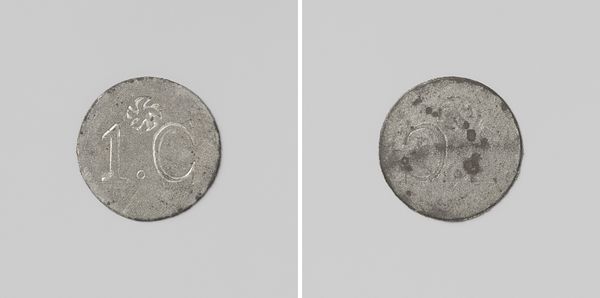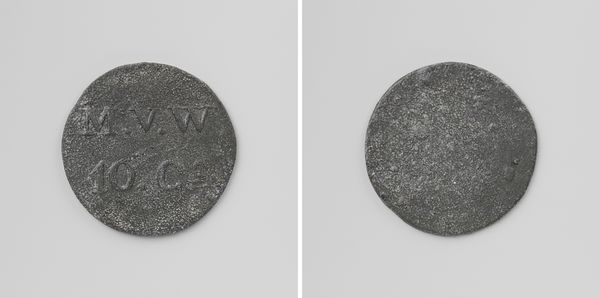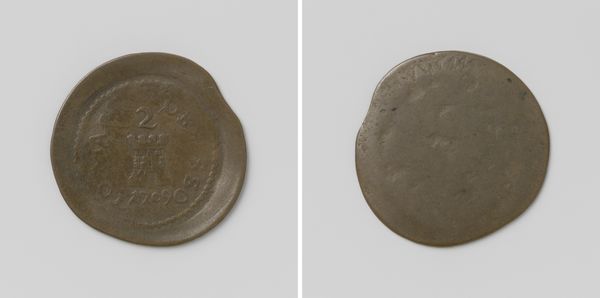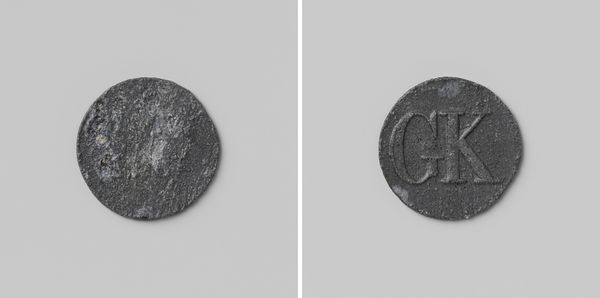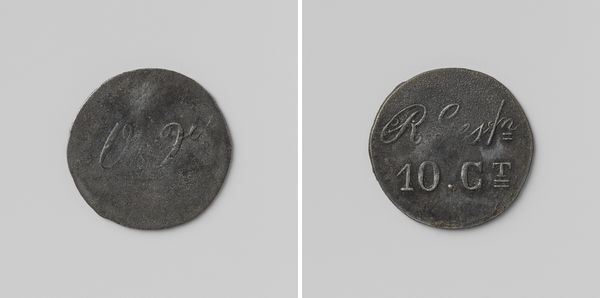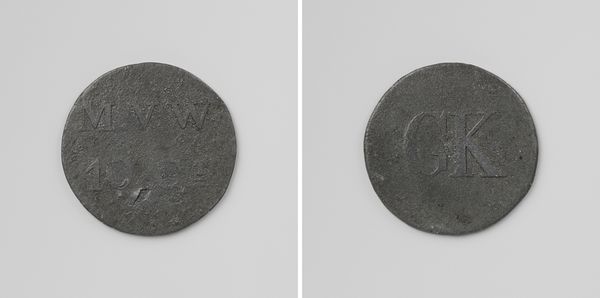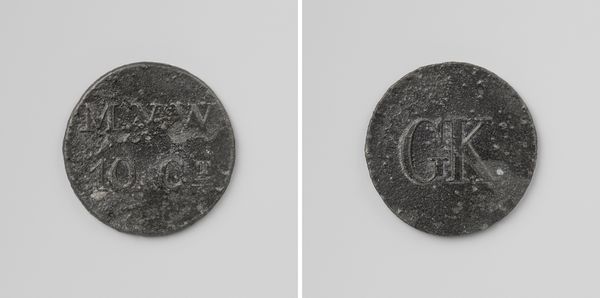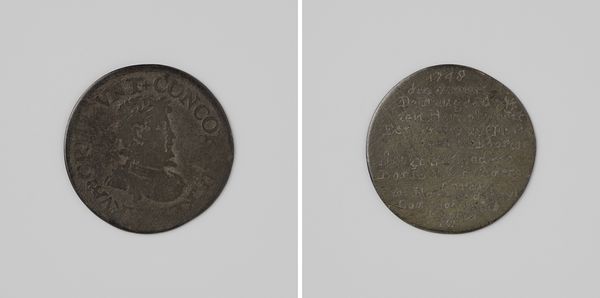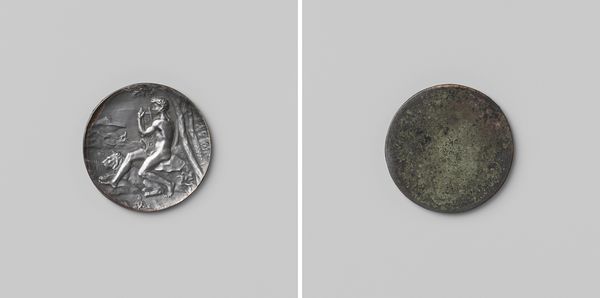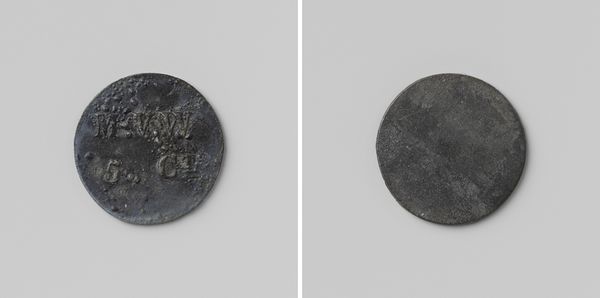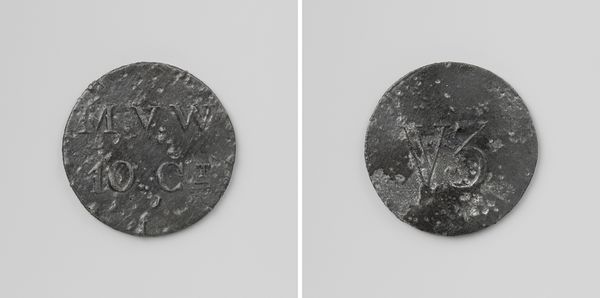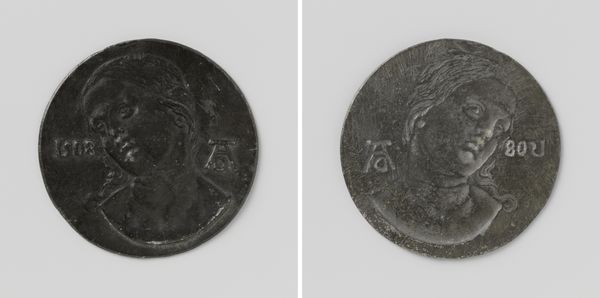
Strafgevangenis te 's-Hertogenbosch, huismunt ter waarde van tien cent 1824 - 1831
0:00
0:00
print, metal, sculpture
# print
#
metal
#
sculpture
#
sculpture
Dimensions: diameter 2.9 cm, weight 23 gr
Copyright: Rijks Museum: Open Domain
Editor: We're looking at a rather humble artifact: a house coin from the 's-Hertogenbosch prison, worth ten cents, dating from sometime between 1824 and 1831. The artist is Hendrikus Wansink. It’s made of metal, but I'm struck by how much it feels like a print because of the lettering. How can we consider the societal context of such a coin? Curator: That's a perceptive observation! Considering this coin as more than mere currency but as a product reflecting a complex network of power, control, and the shaping of identities within the penal system is key. House coins, like this one, represent a self-contained economy *within* the prison walls. Editor: So it's more than just facilitating trade; it's part of the system. Curator: Precisely. These coins stripped inmates of national currency, forcing them into a separate economic and, in turn, social sphere controlled by the prison. It created a unique form of governance through controlled circulation, and how does this impact their identity as prisoners? Editor: It's isolating. Almost like reinforcing their "otherness" from society, which is really dehumanizing. This coin suddenly feels heavy, weighted with that history. How else can it affect their sense of humanity? Curator: By circulating only within the walls, it underscores the inmate's removal from mainstream society and limits their ability to rejoin it after release. It speaks to broader anxieties surrounding crime, punishment, and social reintegration, where their worth literally diminishes to prison currency. Editor: I never would've thought a tiny coin could hold such a weighty story about power, control, and social othering. This piece tells us about prisons, prisoners and the economic structure! Thank you. Curator: My pleasure! Analyzing objects like these helps reveal the intricate relationships between material culture, power dynamics, and the shaping of individual identities.
Comments
No comments
Be the first to comment and join the conversation on the ultimate creative platform.
